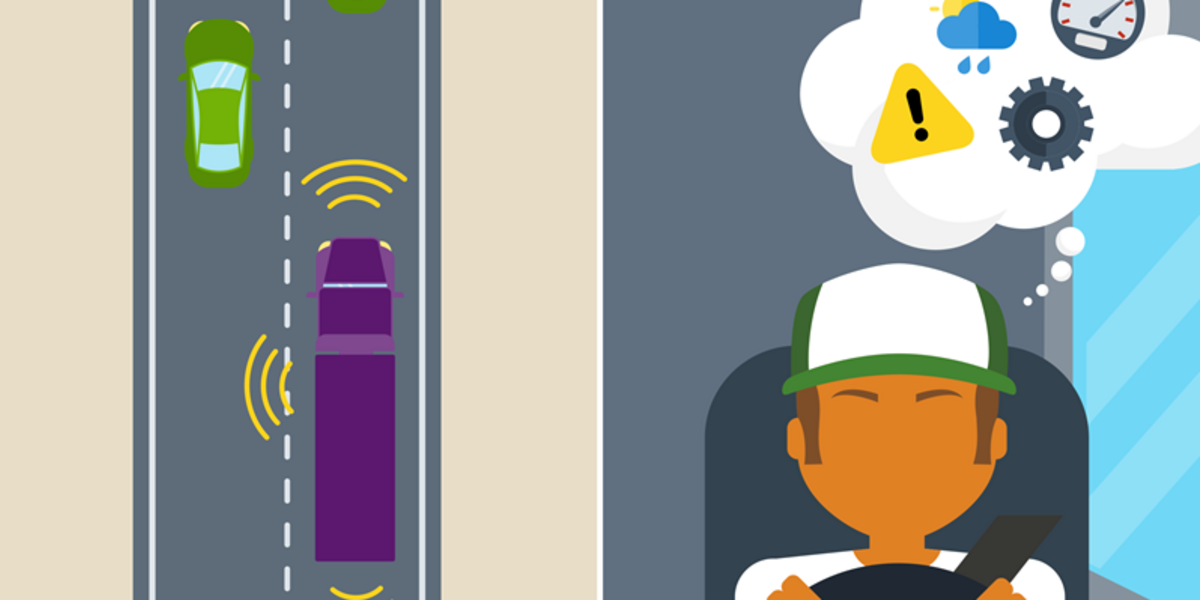With the vaccines now in full swing, we are seeing the benefits and states and provinces are “opening” and lifting restrictions that have been in place with COVID-19. We already have evidence that the driving habits of the general population tend to result in speeding and reckless driving when this occurs. Your drivers for the last year have been operating with a dramatic reduction in the volume of vehicles that they have encountered while driving their trucks daily. Now is the time to remind your drivers of this change and that they should be operating with a high level of defensive driving. Below are the Smith5Keys to defensive driving that the Smith System uses to train drivers.
1. Aim high in steering: look 15 seconds into your future (do not just look at the vehicle in front of you).
2. Get the big picture: look for hazards (other motorists, pedestrians, vehicle doors opening).
3. Keep your eyes moving: do not stare (use your peripheral vision and stop the fixed habit stare).
4. Leave yourself an out: monitor the space cushion around you and your bike.
5. Make sure they see you: use your signals (directionals, 4-way flashers, head lights, brake lights, horn, hand signals) and make eye contact.
The five characteristics of defensive driving are:
Knowledge- Good defensive drivers will have knowledge of the traffic laws and the basics about their motorcycles, such as how the brake system operates and how to read gauges and lights on the dash.
Alertness- Good defensive drivers are alert to what is going on around them. They are well rested and would never take any drugs or alcohol that could affect their concentration before riding a motorcycle.
Anticipation- Defensive drivers anticipate what may or may not happen, and they take action to avoid many problems. They anticipate potential hazards from other motorists, pedestrians, weather and equipment and take steps to minimize the risk.
Judgment- Good defensive drivers do not make risky maneuvers like trying to beat red lights.They don’t try to pass unless it’s safe and they look for alternatives to any traffic situation.
Skill- Good defensive drivers have the technical skills to operate the motorcycle safely through traffic without endangering anyone else on the road. They can handle the motorcycle even in hazardous conditions (Smith System of Defensive Driving).
Record Retention!
So how long do I have to keep records and documents that are required by the Federal Motor Carrier Safety Regulations?
Answer: It depends on which documents we are talking about. The record retention requirements vary greatly. I have summarized the retention requirements for some of the most common documents by subject area below. I have also indicated the Code of Federal Regulation (CFR) of the regulation where the record retention requirements are located:
Driver Qualifications CFR 391
| Regulation | Document | Retention Period |
|---|---|---|
| 391.51 (c) | Complete driver qualification file | 3 years after date of termination |
| 391.51 (d) | Driver Applications | 3 years after date of termination |
| 391.51 (d) 4 | Medical Certificate and long form | 3 years from date of execution |
| 391.51 (d) 2 | Annual Review | 3 years from date of execution |
| 391.51 (d) 3 | Certificate of violations | 3 years from date of execution |
| 391.51 (d) 5 | Physical Waiver | 3 years from date of execution |
| 391.51 (d) 1 | Annual motor vehicle record (MVR) | 3 years from date of execution |
| 391.23 (a) 1 | Initial MVR at time of hire | 3 years after date of termination |
Drug and Alcohol testing Records
| 382.401 (b)(1)(i) |
Records of Alcohol tests with .02 or greater result |
5 years |
| 382.401 (b)(1)(ii) | Records of driver verified positive controlled substance test results | 5 years |
| 382.401 (b)(1)(iii) | Documentation of refusals to take required alcohol and/or drug test | 5 years |
| 382.401 (b)(1)(iv) | Driver evaluations and referrals | 5 years |
| 382.401 (b)(1)(v) |
Calibration documentation to testing devices |
5 years |
| 382.401 (b)(1)(vi) | Administrative records of the Alcohol controlled substance testing programs | 5 years |
| 382.401 (b)(1)(vii) | A copy of each annual calendar year summary required by 382.403 (only those carriers selected) | 5 years |
| 382.401(2) | Records relating to the alcohol and controlled substances collection process | 2 years |
| 382.401(3) | Record of negative and cancelled controlled substance results and alcohol tests with a concentration of less than .02 | 1 year |
| 382.401(4) | Records related to the education and training of breath alcohol technicians, screening test technicians, supervisors, and drivers shall be maintained by the employer while the individual performs the functions which require the training and for *2 years after ceasing to perform these functions | Indefinite* |
Hours of Service Documentation
| 395.8 (k) | Record of duty status and all supporting documents and time records | 6 months |
|
Accident Records |
Accident Register and Files |
3 years after the date of each accident |
Inspection and Maintenance
| 396.3 (c) | Maintenance files as required by 396.3 (b) | 1 year plus 6 months after vehicle leaves carrier’s control |
| 396.9 (d)(3)(ii) | Copy of roadside inspections |
12 months |
| 396.11 (c)(2) | Driver vehicle inspection report | 3 months |
| 396.19 (b) | Annual inspector certification | During employment and 1 year thereafter |
| 396.25 (e) | Brake inspector certification | During employment and 1 year thereafter |
Canada’s ELD Mandate Effective June 12 with Educational Enforcement
Canada's electronic logging device (ELD) mandate, slated to be effective on June 12, is experiencing a slight detour. The mandate will still be effective on that date, but enforcement will be delayed.
On May 5, 2021, the Canadian Council of Motor Transport Administrators (CCMTA) issued a message for industry letter regarding the ELD enforcement strategy. The message states that the jurisdictions plan to support the mandate through a period of progressive enforcement without penalties, including elevated education and awareness until June 12, 2022.
The educational enforcement period will give carriers more time to obtain and install certified ELDs.
While the CCMTA's statement does provide some details surrounding the length of the enforcement period, the exact details may vary by jurisdiction. For example, Quebec and Manitoba have provided details as to their enforcement plans and timelines. Quebec will not enforce the ELD mandate until June 2022. Manitoba has indicated it will be taking a staged approach:
Stage 1: June 2021 to December 2021, educational enforcement.
Stage 2: December 2021 to June 2022, warnings to drivers and carriers who are required to use ELDs but are not in compliance (full enforcement starting June 2022).








